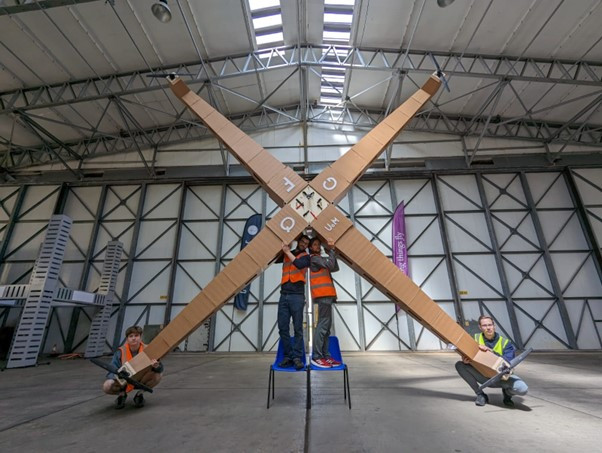
A team of engineers from The University of Manchester has designed and flown the world’s largest drone – the Giant Foam board Quadcopter (GFQ).
GFQ has a wingspan of 21 ft (6.4m) and weighs just 54 lbs (24.5 kg) – making it 0.5kg less than the weight limit set by the Civil Aviation Authority in the UK. It has four rotors, each powered by a 50-volt battery pack, and can fly autonomously using an on-board computer.
It is constructed from foam board, a cardboard-like material composed of a foam core and a paper skin, that is lightweight, easily cut, and compostable – unlike the carbon fiber used for the majority of drone construction. The foam board is cut into pieces using a laser and glued together by hand to form the 3D structure of the drone. The four arms of the drone are hollow boxes that can be detached for easy transport.
“Foamboard is an exciting material to work with; used in the right way, we can create complex aerospace structures where every component is designed to be only as strong as it needs to be – there is no room for over-engineering here,” said Dan Koning, team lead. “Thanks to this design discipline and after extensive background research, we can say with confidence that we have built the largest quadcopter drone in the world.”
Though the GFQ was not built for any specific purpose, the team suggests that similar drones could be used for carrying heavy loads over short distances, or for docking with other drones in mid-air. The team of engineers is now working on improving its design, efficiency, and stability – along with testing it outdoors and seeing how it performs in different weather conditions.
“Thanks to this design discipline and after extensive background research, we can say with confidence that we have built the largest quadcopter drone in the world,” said Koning.
